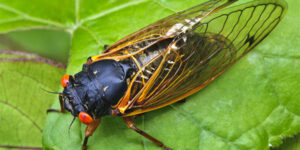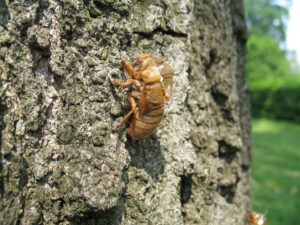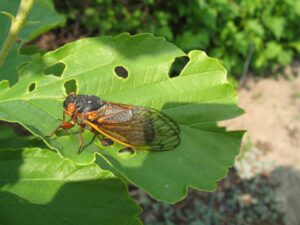February 23, 2024
 In just a few short months we’ll see the buds of Spring begin to pop, smell the beautiful flowers as they open, and…hear the drone of billions of cicadas? That’s right, this Spring will bring us billions of our little friends prompting lots of questions and even some concerns. We’ve put together a few resources to share with you as we gear up for this next season that might help answer some of the questions you might have.
In just a few short months we’ll see the buds of Spring begin to pop, smell the beautiful flowers as they open, and…hear the drone of billions of cicadas? That’s right, this Spring will bring us billions of our little friends prompting lots of questions and even some concerns. We’ve put together a few resources to share with you as we gear up for this next season that might help answer some of the questions you might have.
How is this different from the cicadas that emerge every year?
This year, on top of the regular emergence of cicadas in late Summer, we’ll see the emergence in May-June of two particular broods: Brood XIX, or the Great Southern Brood, and Brood XIII, or the Northern Illinois Brood. The Great Southern Brood’s cycle aligns with a 13 year period while the Northern Illinois Brood aligns with a 17 year period, meaning the last time we experienced a dual emergence was back in 1803, the year Thomas Jefferson was President! There is a narrow band along north-central Illinois, right where we’re located, where the two broods will fully overlap, potentially creating a new brood set to a new cycle. Here is a handy map from NBC Chicago that shows where and when they will emerge.
What does this mean for my plants?
While billions of bugs may sound alarming, there’s no need to worry! Cicada emergence is a natural, cyclical occurrence that Mother Nature has been handling since the Jurassic period. Since cicadas feast on sap from young twigs, consider putting tulle netting around very small shrubs and trees. However, the “damage” the cicadas will do is considered a natural pruning and will not fatally harm the plants. According to the Morton Arboretum, the most affected will be smaller whips, twigs, and branches (mostly in the range of 1/8 to 7/16 inch). Cicada nymphs also feed on roots, so it is possible that young trees might experience slowed growth in the coming years, however there are many factors that contribute to that such as climate, care, and growing conditions. Research has also found that “egg laying wounds” from female cicadas laying eggs in the trees healed over within one to two years after the emergence. So, while there may be initial trauma to small trees and twigs, the cicada emergence is nothing to be scared of. Trees have a way of persevering through tough times; they conserve their energy by slowing their growth, naturally pruning, and healing themselves – it’s amazing how resilient trees are, and how they don’t really need our help! They got this!
So, what can we do?
This natural phenomena is a rare occurrence, and there’s not much we can do but respect the cicadas and try to enjoy this special appearance. Cicadas are an important part of the ecosystem – birds, fish, bats, wasps, and spiders all feast on these creatures. They also aerate lawns and improve water filtration into the ground, as well as add nutrients to the soil as they decompose. Experts warn to not use any insecticides to try and curb the population, as this harms other plants, animals, and insects. Another reason not to use insecticides is because after they die there are lots of cicada recipes you can try! Yes, that’s right, you can eat cicadas! We will have another blog post coming up about some fun things you can make! Will you be brave enough to eat one?
While this dual emergence might seem overwhelming, and like nothing we have experienced before, it will be okay! We’ve put together some further reading and resources so that you can research even more about this phenomena. If you have any questions, please reach out and we can try and help point you in the right direction! At the end of the day, the best we can do is protect any small plants you may be worried about, respect these creatures as they make themselves known, and enjoy their beautiful, buzzing song.
Helpful Articles
- From our friends at Wasco Nursery
- The Morton Arboretum
- University of Illinois Extension
- New York Times
- NPR
- Purdue University
- Periodical Cicadas – Brood Map
~ Maggie Thomas Harper






Thanks for this. Super interesting and helpful.